- Home
- J. K. Rowling
The Hogwarts Collection Page 9
The Hogwarts Collection Read online
Page 9
Although the precise circumstances surrounding the makers’ loss of their map are not given in the Harry Potter novels, it is easy to conclude that they eventually over-reached themselves and were cornered by Argus Filch, probably on a tip-off from Snape, whose obsession it had become to expose his arch-rival, James Potter, in wrong-doing. The masterpiece of a map was confiscated in Sirius, James, Remus and Peter’s final year, and none of them were able to steal it back from a well-prepared and suspicious Filch. In any case, their priorities changed in their final months at school, becoming far more serious and focused on the world beyond Hogwarts, where Lord Voldemort was successfully rising to power. All four of the map’s creators would shortly be inducted into the renegade organisation headed by Albus Dumbledore, the Order of the Phoenix, and a map of their old school – no matter how ingenious – would no longer be of use to them except as a piece of nostalgia.
The Marauder’s Map was, however, of immense use to the young Weasley twins. The story of Fred and George’s acquisition of the map is told in Harry Potter and the Prisoner of Azkaban. It was a mark of their high esteem for Harry Potter, and their belief that he stood in need of assistance with a destiny none of them yet fully understood, that they later gifted the map to him, unwittingly passing it on to the child of one of the creators.
The map was subsequently confiscated from Harry Potter by a Death Eater in disguise at the school, who recognised it as a likely source of his own discovery.
J.K. Rowling’s thoughts
The Marauder’s Map subsequently became something of a bane to its true originator (me), because it allowed Harry a little too much freedom of information. I never showed Harry taking the map back from the empty office of (the supposed) Mad-Eye Moody, and I sometimes regretted that I had not capitalised on this mistake to leave it there. However, I like the moment when Harry watches Ginny’s dot moving around the school in Deathly Hallows, so on balance I am glad I let Harry reclaim his rightful property.
The Marauder’s Map could help students escape to Honeydukes, locate enemies in the Hogwarts hallways, and insult Severus Snape, but it probably wouldn’t be much help in the Great Lake. With its murky depths and magical residents, the Great Lake is one of the castle’s more mysterious locales; the site of the second task in the Triwizard Tournament and the haunt of a host of water-dwelling magical creatures, from Grindylows to the giant squid.
THE GREAT LAKE
BY J.K. ROWLING
The grounds of Hogwarts function partly as a nature reserve for magical creatures which have difficulty existing in Muggle-inhabited areas.
The lake is full of creatures that would make a Muggle naturalist swoon with delight – if terror did not seize them first. There are Grindylows (vicious little water demons), merpeople (of a hardy Scottish strain) and a giant squid, which is semi-domesticated and permits students to tickle its tentacles on sunny days, when it basks in the shallows.
Giant squid genuinely exist, though they are most mysterious creatures. Although their extraordinary bodies have been washed up all over the world, it was not until 2006 that a live giant squid was captured on film by Muggles. I strongly suspect them of having magical powers.
J.K. Rowling’s thoughts
The lake is the setting for the second task that the Triwizard competitors must face in Goblet of Fire, which is also my favourite task. I find it satisfyingly creepy; I like the diversity of the methods employed by the competitors to breathe underwater, and I enjoyed plumbing the depths of a part of the grounds that had never been seen before. In the original draft of Chamber of Secrets, I had Harry and Ron crash into the lake in Mr Weasley’s Ford Anglia, and meet the merpeople there for the first time.
At that time I had a vague notion that the lake might lead to other places, and that the merpeople might play a larger role in the later books than they did, so I thought that Harry ought to be introduced to both at this stage. However, the Whomping Willow provided a more satisfying, less distracting crash, and served a later purpose in Prisoner of Azkaban, too. The Great Lake (which is really a Scottish loch, apparently freshwater and landlocked) never did develop as a portal to other seas or rivers, although the appearance of the Durmstrang ship from its depths in Goblet of Fire hints at the fact that if you are travelling by an enchanted craft, you might be able to take a magical shortcut to other waterways.
It’s time to get down to the real business of Hogwarts: lessons. You won’t find chemistry and mathematics on the curriculum, but then you wouldn’t expect to see Potions and Arithmancy on a Muggle timetable.
HOGWARTS SCHOOL SUBJECTS
BY J.K. ROWLING
All first-years at Hogwarts must take seven subjects: Transfiguration, Charms, Potions, History of Magic, Defence Against the Dark Arts, Astronomy and Herbology. Flying lessons (on broomsticks) are also compulsory.
At the end of their second year at Hogwarts, students are required to choose a minimum of two more subjects from the following list: Arithmancy, Muggle Studies, Divination, Study of Ancient Runes and Care of Magical Creatures.
Very specialised subjects such as Alchemy are sometimes offered in the final two years, if there is sufficient demand.
J.K. Rowling’s thoughts
A slightly different list of school subjects appears in my earliest notes. Herbology is called ‘Herbalism’, Divination is compulsory from the first year, as are Alchemy and a subject called simply ‘Beasts’, whereas Transfiguration is called ‘Transfiguration/Metamorphosis’.
If, like Hermione, nearly all of these subjects sound essential to you, then a certain magical object might come in handy. In Harry Potter and the Prisoner of Azkaban, Hermione managed to double her work load by securing the use of a Time-Turner, a magical device that enables the wearer to travel back in time. However, using a Time-Turner can have grave consequences.
TIME-TURNER
BY J.K. ROWLING
In spite of the many Muggle fantasies around the subject, time travel is possible in only a limited sense even in the magical world. While the subject is shrouded in great secrecy – investigations are ongoing in the Department of Mysteries – it appears that magic can take you only so far.
According to Professor Saul Croaker, who has spent his entire career in the Department of Mysteries studying time-magic:
‘As our investigations currently stand, the longest period that may be relived without the possibility of serious harm to the traveller or to time itself is around five hours. We have been able to encase single Hour-Reversal Charms, which are unstable and benefit from containment, in small, enchanted hour-glasses that may be worn around a witch or wizard’s neck and revolved according to the number of hours the user wishes to relive.
‘All attempts to travel back further than a few hours have resulted in catastrophic harm to the witch or wizard involved. It was not realised for many years why time travellers over great distances never survived their journeys. All such experiments have been abandoned since 1899, when Eloise Mintumble became trapped, for a period of five days, in the year 1402. Now we understand that her body had aged five centuries in its return to the present and, irreparably damaged, she died in St Mungo’s Hospital for Magical Maladies and Injuries shortly after we managed to retrieve her. What is more, her five days in the distant past caused great disturbance to the life paths of all those she met, changing the course of their lives so dramatically that no fewer than twenty-five of their descendants vanished in the present, having been “un-born”.
‘Finally, there were alarming signs, during the days following Madam Mintumble’s recovery, that time itself had been disturbed by such a serious breach of its laws. Tuesday following her reappearance lasted two and a half full days, whereas Thursday shot by in the space of four hours. The Ministry of Magic had a great deal of trouble in covering this up and since that time, the most stringent laws and penalties have been placed around those stud
ying time travel.’
Even the use of the very limited amount of Time-Turners at the Ministry’s disposal is hedged around with hundreds of laws. While not as potentially dangerous as skipping five centuries, the re-use of a single hour can still have dramatic consequences and the Ministry of Magic seeks the strictest guarantees if it permits the use of these rare and powerful objects. It would surprise most of the magical community to know that Time-Turners are generally only used to solve the most trivial problems of time-management and never for greater or more important purposes, because, as Saul Croaker tells us, ‘just as the human mind cannot comprehend time, so it cannot comprehend the damage that will ensue if we presume to tamper with its laws.’
The Ministry’s entire stock of Time-Turners was destroyed during a fight in the Department of Mysteries about three years after Hermione Granger was granted permission to use one at Hogwarts.
J.K. Rowling’s thoughts
I went far too light-heartedly into the subject of time travel in Harry Potter and the Prisoner of Azkaban. While I do not regret it (Prisoner of Azkaban is one of my favourite books in the series), it opened up a vast number of problems for me, because after all, if wizards could go back and undo problems, where were my future plots?
I solved the problem to my own satisfaction in stages. Firstly, I had Dumbledore and Hermione emphasise how dangerous it would be to be seen in the past, to remind the reader that there might be unforeseen and dangerous consequences as well as solutions in time travel. Secondly, I had Hermione give back the only Time-Turner ever to enter Hogwarts. Thirdly, I smashed all remaining Time-Turners during the battle in the Department of Mysteries, removing the possibility of reliving even short periods in the future.
This is just one example of the ways in which, when writing fantasy novels, one must be careful what one invents. For every benefit, there is usually a drawback.
It isn’t just students and teachers who live at the school. Hogwarts is home to many others aside from the living – and these spirits have nothing but time. Among Hogwarts’ permanent residents are a colourful collection of otherworldly inhabitants.
HOGWARTS GHOSTS
BY J.K. ROWLING
In spite of the unfounded rumours surrounding the Shrieking Shack, which was never haunted at all, Hogwarts is the most heavily haunted dwelling place in Britain (and this is against stiff competition, as there are more reported ghost sightings/sensings on these damp islands than anywhere else in the world). The castle is a congenial place for ghosts, because the living inhabitants treat their dead friends with tolerance and even affection, no matter how many times they have heard the same old reminiscences.
Each of the four Hogwarts houses has its own ghost. Slytherin boasts the Bloody Baron, who is covered in silver bloodstains. The least talkative of the house ghosts is the Grey Lady, who is long-haired and beautiful.
Hufflepuff House is haunted by the Fat Friar, who was executed because senior churchmen grew suspicious of his ability to cure the pox merely by poking peasants with a stick, and his ill-advised habit of pulling rabbits out of the communion cup. Though a genial character in general, the Fat Friar still resents the fact that he was never made a cardinal.
Gryffindor house is home to Nearly Headless Nick, who in life was Sir Nicholas de Mimsy-Porpington. Something of a snob, and a less accomplished wizard than he believed, Sir Nicholas lounged around the court of Henry VII in life, until his foolish attempt to beautify a lady-in-waiting by magic caused the unfortunate woman to sprout tusks. Sir Nicholas was stripped of his wand and inexpertly executed, leaving his head hanging off by a single flap of skin and sinew. He retains a feeling of inadequacy with regard to truly headless ghosts.
Another notable Hogwarts ghost is Moaning Myrtle, who haunts an unpopular girls’ toilet. Myrtle was a student at Hogwarts when she died, and she chose to return to school in perpetuity, with the short-term aim of haunting her arch-rival and bully, Olive Hornby. As the decades have rolled by, Myrtle has made a name for herself as the most miserable ghost in school, usually to be found lurking inside one of the toilets and filling the tiled space with her moans and howls.
J.K. Rowling’s thoughts
The inspiration for Moaning Myrtle was the frequent presence of a crying girl in communal bathrooms, especially at the parties and discos of my youth. This does not seem to happen in male bathrooms, so I enjoyed placing Harry and Ron in such uncomfortable and unfamiliar territory in Harry Potter and the Chamber of Secrets and Harry Potter and the Half-Blood Prince.
The most productive ghost at Hogwarts is, of course, Professor Binns, the old History of Magic teacher who fell asleep in front of the staff-room fire one day and simply got up to give his next class, leaving his body behind. There is some debate as to whether or not Professor Binns realises he is dead. While his entrance to lessons through the blackboard is vaguely amusing the first time students see it, he is not the most stimulating teacher.
The inspiration for Professor Binns was an old professor at my university, who gave every lecture with his eyes closed, rocking backwards and forwards slightly on his toes. While he was a brilliant man, who disgorged an immense amount of valuable information at every lecture, his disconnect with his students was total. Professor Binns is only dimly aware of his living students, and is astonished when they begin asking him questions.
In the very earliest list of ghosts I ever wrote for Hogwarts, I included Myrtle (initially named ‘Wailing Wanda’), Professor Binns, the Grey Lady (then called ‘the Whispering Lady’) and the Bloody Baron. There was also a Black Knight, The Toad (which left ectoplasm all over its classroom), and a ghost I rather regret not using: his name was Edmund Grubb, and the notes beside his name say: Expired in the doorway of the Dining Hall. Sometimes stops people getting in, out of spite. Fat Victorian ghost. (Ate poisonous berries).
Ghosts are such a normal sight to behold at Hogwarts that it’s easy to forget you don’t often see them out in the Muggle world. Of course, there’s a good explanation for that.
GHOSTS
BY J.K. ROWLING
In the world of Harry Potter, a ghost is the transparent, three-dimensional imprint of a deceased witch or wizard, which continues to exist in the mortal world. Muggles cannot come back as ghosts, and the wisest witches and wizards choose not to. It is those with ‘unfinished business’, whether in the form of fear, guilt, regrets or overt attachment to the material world, who refuse to move on to the next dimension.
Having chosen a feeble simulacrum of mortal life, ghosts are limited in what they can experience. No physical pleasure remains to them, and their knowledge and outlook remains at the level it had attained during life, so that old resentments (for instance, at having an incompletely severed neck) continue to rankle after several centuries. For this reason, ghosts tend to be poor company, on the whole. They are especially disappointing on the one subject that fascinates most people: ghosts cannot return a very sensible answer on what it is like to die, because they have chosen an impoverished version of life instead.
Ghosts can pass through solid objects without causing damage to themselves or the material, but create disturbances in water, fire and air. The temperature drops in the immediate vicinity of a ghost, an effect intensified if many congregate in the same place. Their appearance can also turn flames blue. Should part or all of a ghost pass through a living creature, the latter will experience a freezing sensation as though they have been plunged into ice-cold water.
Witches and wizards are much more susceptible to what Muggles call paranormal activity, and will see (and hear) ghosts plainly, where a Muggle might only feel that a haunted place is cold or ‘creepy’. Muggles who insist that they see ghosts in perfect focus are either a) lying or b) wizards showing off – and in flagrant breach of the International Statute of Secrecy.
The circumstances around Nearly Headless Nick’s botched beheading were never explained in the Harry P
otter series, but they’re a mystery no longer. You’ll find out exactly what happened to the aggrieved ghost (straight from Nick himself) in the following ballad, which was axed from an early draft of Harry Potter and the Chamber of Secrets.
THE BALLAD OF NEARLY HEADLESS NICK
BY J.K. ROWLING
It was a mistake any wizard could make
Who was tired and caught on the hop
One piffling error, and then, to my terror,
I found myself facing the chop.
Alas for the eve when I met Lady Grieve
A-strolling the park in the dusk!
She was of the belief I could straighten her teeth
Next moment she’d sprouted a tusk.
I cried through the night that I’d soon put her right
But the process of justice was lax;
They’d brought out the block, though they’d mislaid the rock
Where they usually sharpened the axe.
Next morning at dawn, with a face most forlorn,
The priest said to try not to cry,
‘You can come just like that, no, you won’t need a hat,’
And I knew that my end must be nigh.
The man in the mask who would have the sad task
Of cleaving my head from my neck,

 Harry Potter and the Philosophers Stone
Harry Potter and the Philosophers Stone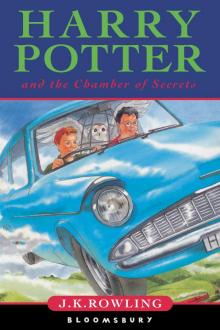 Harry Potter and the Chamber of Secrets
Harry Potter and the Chamber of Secrets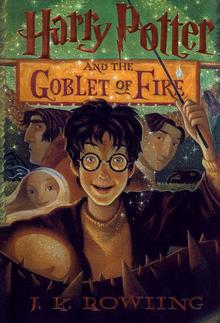 Harry Potter and the Goblet of Fire
Harry Potter and the Goblet of Fire Harry Potter and the Deathly Hallows
Harry Potter and the Deathly Hallows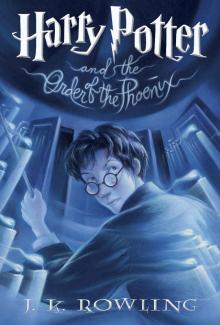 Harry Potter and the Order of the Phoenix
Harry Potter and the Order of the Phoenix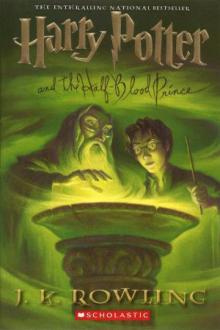 Harry Potter and the Half-Blood Prince
Harry Potter and the Half-Blood Prince Harry Potter and the Prisoner of Azkaban
Harry Potter and the Prisoner of Azkaban Fantastic Beasts and Where to Find Them
Fantastic Beasts and Where to Find Them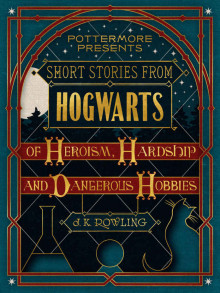 Short Stories from Hogwarts of Heroism, Hardship and Dangerous Hobbies
Short Stories from Hogwarts of Heroism, Hardship and Dangerous Hobbies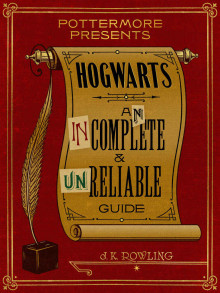 Hogwarts: An Incomplete and Unreliable Guide
Hogwarts: An Incomplete and Unreliable Guide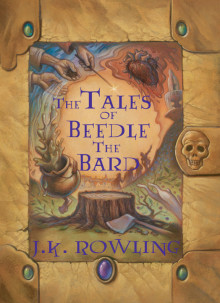 The Tales of Beedle the Bard
The Tales of Beedle the Bard The Casual Vacancy
The Casual Vacancy Harry Potter and the Cursed Child
Harry Potter and the Cursed Child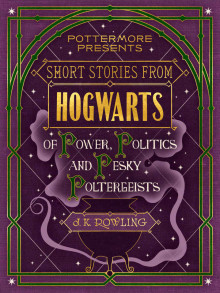 Short Stories from Hogwarts of Power, Politics and Pesky Poltergeists
Short Stories from Hogwarts of Power, Politics and Pesky Poltergeists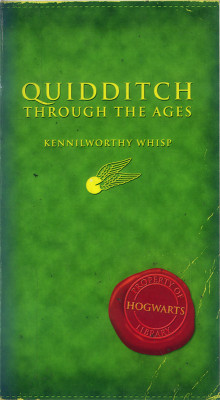 Quidditch Through the Ages
Quidditch Through the Ages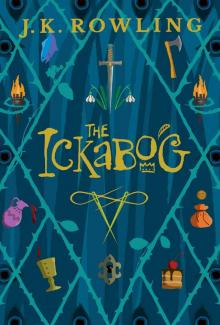 The Ickabog
The Ickabog![Fantastic Beasts, The Crimes of Grindelwald [UK] Read online](http://i1.bookreadfree.com/i/03/19/fantastic_beasts_the_crimes_of_grindelwald_uk_preview.jpg) Fantastic Beasts, The Crimes of Grindelwald [UK]
Fantastic Beasts, The Crimes of Grindelwald [UK]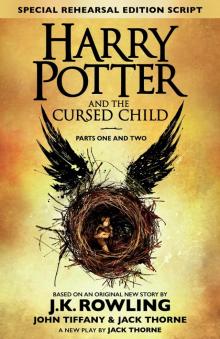 Harry Potter and the Cursed Child: Parts One and Two
Harry Potter and the Cursed Child: Parts One and Two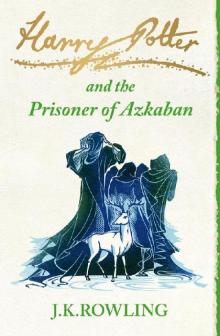 The Prisoner of Azkaban
The Prisoner of Azkaban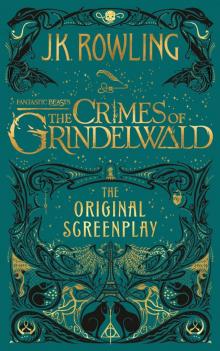 Fantastic Beasts: The Crimes of Grindelwald
Fantastic Beasts: The Crimes of Grindelwald The Hogwarts Library Collection
The Hogwarts Library Collection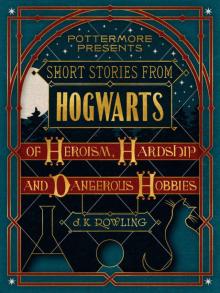 Short Stories from Hogwarts of Heroism, Hardship and Dangerous Hobbies (Kindle Single) (Pottermore Presents)
Short Stories from Hogwarts of Heroism, Hardship and Dangerous Hobbies (Kindle Single) (Pottermore Presents)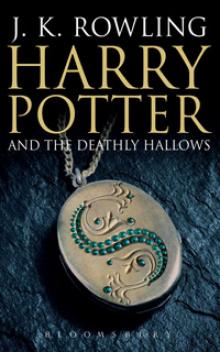 Harry Potter and the Deathly Hallows hp-7
Harry Potter and the Deathly Hallows hp-7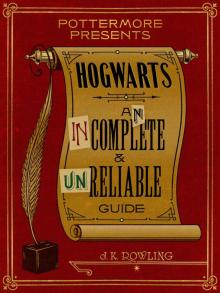 Hogwarts: An Incomplete and Unreliable Guide (Kindle Single) (Pottermore Presents)
Hogwarts: An Incomplete and Unreliable Guide (Kindle Single) (Pottermore Presents)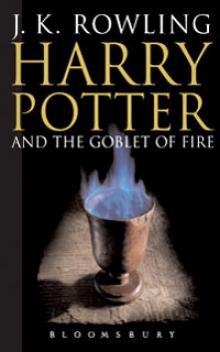 Harry Potter and the Goblet of Fire hp-4
Harry Potter and the Goblet of Fire hp-4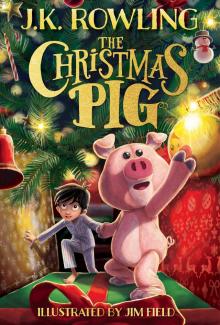 The Christmas Pig
The Christmas Pig Harry Potter and the Sorcerer's Stone
Harry Potter and the Sorcerer's Stone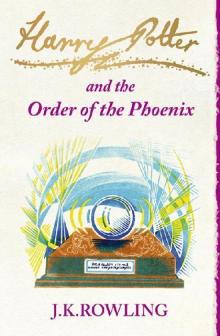 The Order of the Phoenix
The Order of the Phoenix Harry Potter and the Prisoner of Azkaban hp-3
Harry Potter and the Prisoner of Azkaban hp-3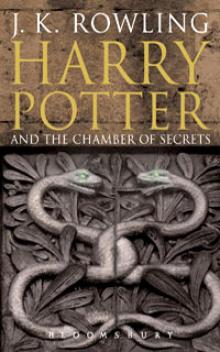 Harry Potter and the Chamber of Secrets hp-2
Harry Potter and the Chamber of Secrets hp-2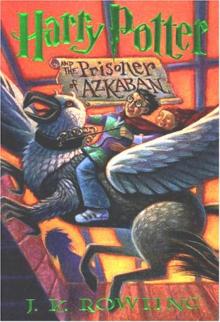 HP 3 - Harry Potter and the Prisoner of Azkaban
HP 3 - Harry Potter and the Prisoner of Azkaban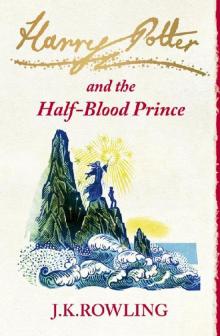 The Half-Blood Prince
The Half-Blood Prince The Hogwarts Collection
The Hogwarts Collection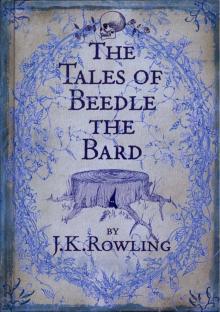 Tales of Beedle the Bard
Tales of Beedle the Bard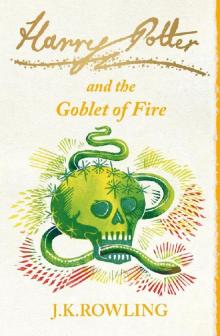 The Goblet of Fire
The Goblet of Fire Harry Potter and the Half-Blood Prince hp-6
Harry Potter and the Half-Blood Prince hp-6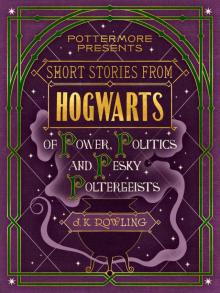 Short Stories from Hogwarts of Power, Politics and Pesky Poltergeists (Kindle Single) (Pottermore Presents)
Short Stories from Hogwarts of Power, Politics and Pesky Poltergeists (Kindle Single) (Pottermore Presents)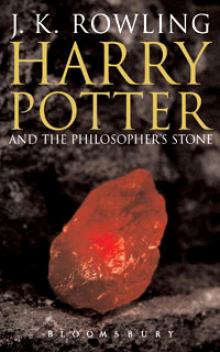 Harry Potter and the Sorcerer's Stone hp-1
Harry Potter and the Sorcerer's Stone hp-1